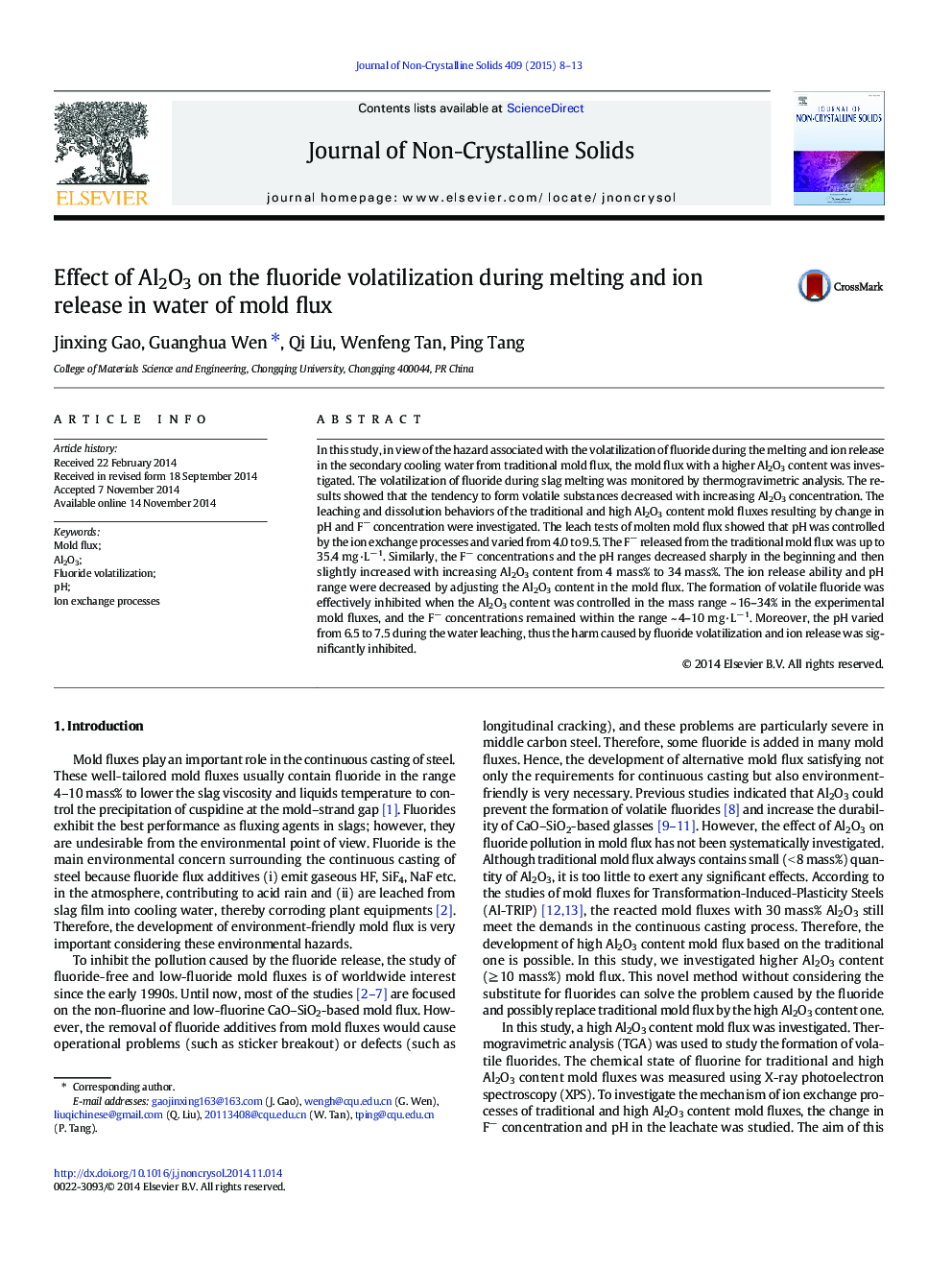| Article ID | Journal | Published Year | Pages | File Type |
|---|---|---|---|---|
| 1480842 | Journal of Non-Crystalline Solids | 2015 | 6 Pages |
•The fluoride (F−) volatilization during melting and ion release in water of mold flux was studied.•The F− released from mold flux by the ion exchange in the leach tests of molten mold flux could pollute the water.•The pH was controlled by the ion exchange processes in the leach tests of molten mold flux.•Al2O3 significantly inhibited the hazards caused by F− release in water and air.
In this study, in view of the hazard associated with the volatilization of fluoride during the melting and ion release in the secondary cooling water from traditional mold flux, the mold flux with a higher Al2O3 content was investigated. The volatilization of fluoride during slag melting was monitored by thermogravimetric analysis. The results showed that the tendency to form volatile substances decreased with increasing Al2O3 concentration. The leaching and dissolution behaviors of the traditional and high Al2O3 content mold fluxes resulting by change in pH and F− concentration were investigated. The leach tests of molten mold flux showed that pH was controlled by the ion exchange processes and varied from 4.0 to 9.5. The F− released from the traditional mold flux was up to 35.4 mg·L− 1. Similarly, the F− concentrations and the pH ranges decreased sharply in the beginning and then slightly increased with increasing Al2O3 content from 4 mass% to 34 mass%. The ion release ability and pH range were decreased by adjusting the Al2O3 content in the mold flux. The formation of volatile fluoride was effectively inhibited when the Al2O3 content was controlled in the mass range ~ 16–34% in the experimental mold fluxes, and the F− concentrations remained within the range ~ 4–10 mg·L− 1. Moreover, the pH varied from 6.5 to 7.5 during the water leaching, thus the harm caused by fluoride volatilization and ion release was significantly inhibited.
